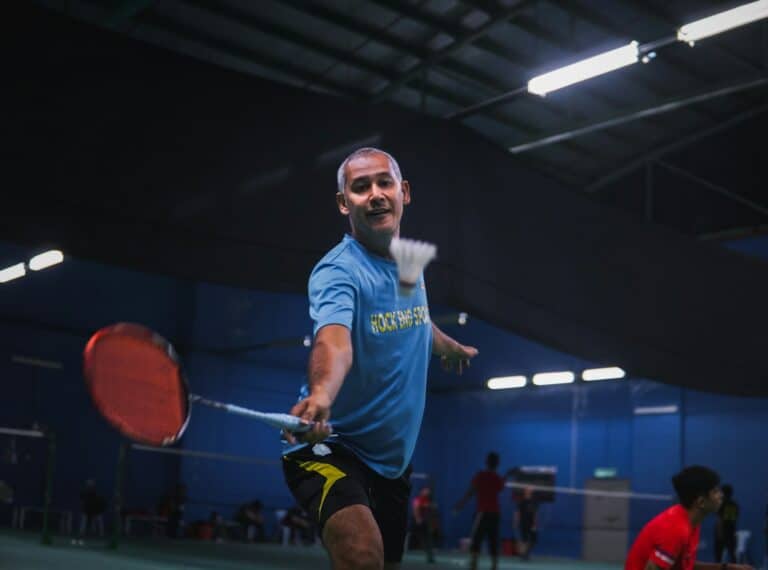Artificial intelligence is changing how fitness professionals deliver training programs, manage clients, and grow their businesses. From automated workout planning to real-time performance tracking, AI tools help personal trainers work more efficiently while providing better results for clients. Trainers using AI-powered platforms report handling 30% more clients and seeing 20% improvements in client engagement, all while maintaining service quality.
The integration of AI creates opportunities for trainers to automate routine tasks, analyze client data more effectively, and deliver personalized fitness experiences at scale. Rather than replacing human expertise, AI amplifies what trainers do best by handling time-consuming administrative work and providing data-driven insights that enhance decision-making.
Key Facts at a Glance
- 78% of personal trainers now use AI to create customized training plans for their clients
- AI-powered platforms improve workout adherence by 71% compared to traditional methods
- Trainers using AI tools can handle 30% more clients without sacrificing service quality
- AI chatbots help clients lose an additional 3.5 pounds on average compared to traditional coaching
- The AI fitness market reached $9.8 billion in 2024 and projects growth to $46.1 billion by 2034
- Client engagement increases by 20% when trainers implement AI-driven platforms
- AI-powered rehabilitation methods reduce recovery time by 30% compared to standard approaches
- Gyms using AI-driven tools see up to 25% increases in member retention rates
Personalizing Client Training Programs with AI
AI algorithms analyze individual client data to generate workout plans tailored to specific fitness levels, goals, and physical limitations. These systems process information from wearable devices, fitness trackers, and client history to identify patterns and optimize training recommendations. The result is programming that adapts to each person rather than forcing clients into generic templates.
Platforms like Trainerize and PT Distinction use machine learning to analyze client performance data and automatically adjust workout intensity, volume, and recovery periods. When a client consistently completes workouts ahead of schedule, the AI increases difficulty. When patterns indicate inadequate recovery, the system reduces training load. This dynamic adjustment happens without requiring trainers to manually review every session.
The personalization extends beyond exercise selection. AI tools examine movement patterns through video analysis or smart equipment sensors to identify form issues and technique problems. Systems like Tempo Studio and Tonal use 3D sensors and motion-capture technology to provide real-time corrections during workouts, ensuring clients maintain proper form even during remote training sessions.
Nutrition Planning and Dietary Management

Healthy nutrition – artistic impression. Image credit: Vitalii Pavlyshynets via Unsplash, free license
AI-powered nutrition apps like MyFitnessPal AI and Carbon Diet Coach analyze eating patterns and optimize macronutrient distribution based on training goals and metabolic data. These platforms use food recognition technology to identify meals from photos, automatically calculate calorie and nutrient content, and track intake without requiring manual food logging.
The Lumen Metabolic Tracker measures real-time metabolic data through breath analysis, providing insights into whether the body is burning carbohydrates or fats for fuel. This information helps trainers adjust meal timing and macronutrient ratios to optimize energy levels and body composition changes. Studies show 68% of users improve their dietary habits when using AI-driven nutrition tools.
Automating Client Communication and Engagement
AI chatbots handle routine client inquiries around the clock, answering questions about workout schedules, exercise techniques, and program details without trainer involvement. These systems maintain consistent communication by sending personalized check-ins, progress updates, and motivational messages based on individual client behavior and performance data.
Trainers using AI-driven communication platforms report 20% improvements in client engagement. The chatbots track workout completion rates, identify clients at risk of dropping out, and trigger interventions when engagement patterns decline. Automated reminders reduce missed sessions, while progress notifications keep clients motivated between training days.
Appointment Scheduling and Administrative Tasks
AI scheduling assistants integrate with calendar systems to manage bookings, reschedule appointments, and handle cancellations without manual intervention. Clients book sessions through chat interfaces that check trainer availability in real-time and confirm appointments instantly. This automation eliminates scheduling conflicts and reduces the back-and-forth communication traditionally required for appointment management.
Platforms like TrueCoach automate workout reminders, progress tracking updates, and payment processing. These systems handle recurring billing, send invoice notifications, and process payments automatically, freeing trainers from administrative work that takes time away from actual coaching.
Real-Time Performance Tracking and Analysis
Wearable devices like WHOOP 4.0, Oura Ring Gen4, and Garmin watches collect continuous biometric data including heart rate variability, sleep quality, recovery status, and training readiness. AI algorithms process this information to generate recovery scores that help trainers optimize workout scheduling and intensity levels based on each client’s physiological state.
The integration of wearable data with training platforms creates comprehensive dashboards showing workout performance, sleep patterns, stress levels, and recovery metrics in one interface. Trainers access this information to identify overtraining patterns, adjust programming proactively, and have data-backed conversations about lifestyle factors affecting fitness progress.
Movement Analysis and Form Correction
Smart gym equipment uses computer vision and sensor technology to analyze movement patterns and provide immediate feedback on exercise form. AI algorithms compare client movements against ideal biomechanical patterns, identifying deviations that could lead to injury or reduce exercise effectiveness.
Research shows AI-powered form guidance reduces injury rates by 25% through proper technique coaching and workout optimization. The systems detect subtle problems like knee valgus during squats or shoulder elevation during lateral raises, alerting trainers to issues that might be missed during in-person or remote sessions.
Scaling Training Business Operations
AI tools enable trainers to manage larger client rosters without proportional increases in workload. Automation handles program design, progress tracking, and routine communication, allowing individual trainers to effectively serve 30% more clients while maintaining personalized attention where it matters most.
This scalability creates new revenue opportunities through hybrid coaching models. Trainers offer AI-managed workout programs at lower price points for budget-conscious clients while reserving direct coaching time for high-value interactions like technique refinement, goal setting, and motivation. The combination of automated efficiency and human expertise creates tiered service offerings that expand market reach.
Content Creation for Marketing
AI writing assistants like ChatGPT-4 and Claude AI generate social media captions, blog posts, email newsletters, and promotional content in seconds. Trainers provide prompts describing their target audience and message, then receive polished content that maintains consistent brand voice across platforms.
Video editing tools like Descript and Lumen5 transform raw footage into professional exercise demonstrations and promotional reels without requiring advanced editing skills. The AI handles background removal, adds text overlays, generates captions, and creates polished videos suitable for social media, websites, or client education materials.
Design platforms like Canva AI provide templates and automated suggestions for creating professional graphics, workout guides, and marketing materials. These tools help trainers maintain consistent visual branding without hiring dedicated designers or spending hours on content creation.
Data-Driven Decision Making
AI systems aggregate data from multiple sources to identify trends that inform programming decisions. Analysis of workout completion rates, exercise preferences, and progress patterns reveals which approaches work best for different client types. Trainers use these insights to refine their methodologies and improve results across their entire client base.
Predictive analytics identify clients at risk of discontinuing services based on engagement patterns, workout attendance, and communication frequency. Early warning systems alert trainers when clients show signs of disengagement, enabling proactive interventions before cancellations occur. Gyms implementing AI-driven retention tools report up to 25% improvements in member retention.
Business Intelligence and Performance Metrics
AI-powered business analytics platforms track key performance indicators including client acquisition costs, lifetime value, session attendance rates, and revenue per client. These dashboards provide clear visibility into business health and identify opportunities for growth or areas requiring attention.
The systems analyze pricing strategies by examining client conversion rates at different price points and service packages. Trainers receive recommendations for optimizing pricing structure, upselling opportunities, and package configurations that maximize revenue while maintaining client satisfaction.
Essential AI Tools for Modern Trainers
| Tool Category | Primary Function | Key Benefit |
| AI Assistants | Content generation and automation | Reduces content creation time by 75% |
| Wearable Technology | Biometric data collection and analysis | Provides real-time recovery insights |
| Smart Equipment | Movement analysis and form correction | Reduces injury risk by 25% |
| Nutrition Apps | Dietary tracking and meal planning | Improves eating habits for 68% of users |
| Chatbots | Client communication and support | Increases engagement by 20% |
| Video Editors | Professional video production | Creates polished content in minutes |
Implementation Considerations
Choosing the Right Tools
Selecting appropriate AI tools depends on business model and client demographics. Trainers working primarily with individual clients need different solutions than those managing group programs or selling digital products. Evaluate tools based on integration capabilities with existing systems, ease of use, and alignment with specific business goals.
Start with one or two core platforms that address the most time-consuming aspects of your business rather than adopting multiple tools simultaneously. Master foundational AI applications like automated scheduling or workout programming before expanding to advanced features like predictive analytics or complex content creation workflows.
Data Privacy and Security
AI platforms collect sensitive client information including health data, biometric measurements, and personal fitness goals. Choose tools that prioritize data security through encryption, secure storage, and compliance with privacy regulations. Review each platform’s data handling policies and ensure they meet professional standards for protecting client information.
Inform clients about what data gets collected, how AI systems use their information, and what safeguards protect their privacy. Transparency builds trust and allows clients to make informed decisions about participating in AI-enhanced training programs.
Maintaining the Human Element
AI handles routine tasks and data processing, but personal trainers provide irreplaceable human qualities including empathy, motivation, and intuitive understanding of individual client needs. Technology cannot replicate the emotional support trainers offer when clients face setbacks, the ability to read body language and non-verbal cues, or the personal relationships that keep clients committed to their fitness journeys.
Use AI to handle administrative work and data analysis so you spend more time on high-value human interactions. The most successful training businesses combine AI efficiency with personal attention, using technology to scale operations while preserving the individual care that differentiates excellent trainers from mediocre ones.
Limitations of AI in Fitness Training
While AI provides powerful capabilities, it lacks emotional intelligence to understand the psychological barriers clients face during their fitness journeys. The technology cannot offer genuine empathy during difficult periods, provide the personalized encouragement that resonates on an emotional level, or build the trust and rapport essential to long-term trainer-client relationships.
AI systems make decisions based on data patterns and algorithms, but they miss contextual factors like mood, energy levels, external stressors, or life circumstances affecting client performance. Personal trainers make real-time adjustments based on subtle observations and experiential knowledge that current AI cannot replicate.
Creative problem-solving remains a human strength. Developing innovative training techniques, creating engaging workout variations, and designing solutions for unique client challenges requires the creativity and practical wisdom trainers develop through years of experience. AI generates recommendations based on existing patterns but cannot innovate beyond its training data.
Financial Impact and Return on Investment
AI-enhanced coaching services deliver substantial financial returns through improved efficiency and client outcomes. Trainers implementing AI tools report handling larger client rosters with the same time investment, creating opportunities for increased revenue without proportional increases in working hours.
The technology enables new revenue streams through tiered service offerings. Budget-conscious clients access AI-managed workout programs at lower price points, while premium clients receive direct coaching attention for complex needs. This market segmentation expands total addressable market without diluting service quality for any client segment.
Client retention improvements generate significant long-term value. The 25% retention increases reported by gyms using AI-driven engagement tools translate directly to higher lifetime client value and more stable monthly revenue. Better retention reduces customer acquisition costs by decreasing the need for constant new client recruitment.
Future Developments in AI Fitness Technology
Wearable technology continues evolving toward more comprehensive health monitoring. Future devices will integrate stress level tracking, hormone balance indicators, and detailed metabolic measurements, providing trainers with complete physiological profiles for optimizing programming down to the smallest details.
Virtual reality and augmented reality integration will enhance remote training experiences. Trainers will conduct sessions where clients see real-time form corrections overlaid on their movements, practice exercises in immersive environments, and receive visual feedback that makes remote training nearly indistinguishable from in-person sessions.
Advanced AI algorithms will improve at predicting client success, identifying optimal training approaches, and preventing plateaus before they occur. Machine learning models trained on millions of workout sessions will provide increasingly accurate recommendations for exercise selection, periodization strategies, and recovery protocols.
Conclusion
AI transforms personal training by automating administrative tasks, providing data-driven insights, and enabling personalized programming at scale. The technology allows trainers to serve more clients effectively while maintaining high service standards and improving outcomes. Rather than replacing human trainers, AI amplifies their capabilities by handling routine work and freeing time for meaningful client interactions.
Success requires balancing technological efficiency with human qualities that make personal training valuable. Empathy, motivation, relationship building, and intuitive coaching remain exclusively human strengths that no algorithm can replicate. The most effective training businesses integrate AI tools strategically while preserving the personal attention and emotional support that clients value most.
As AI technology advances, trainers who adapt early gain advantages over competitors still relying on manual processes. The investment in learning and implementing AI tools pays dividends through improved client results, higher retention rates, and expanded business capacity. The future of personal training combines artificial intelligence and human expertise, creating experiences that neither could achieve alone.
If you are interested in this topic, we suggest you check our articles:
- AI in Professional Sport: An Exciting Addition
- AI within Sports Medicine: Can Recovery Times Be Improved?
- AI in the PGA Tour: Transforming How Fans Experience Golf
Sources: FitBudd, Unite.ai, The Digital Insider, Australian Institute of Fitness
Written by Alius Noreika


